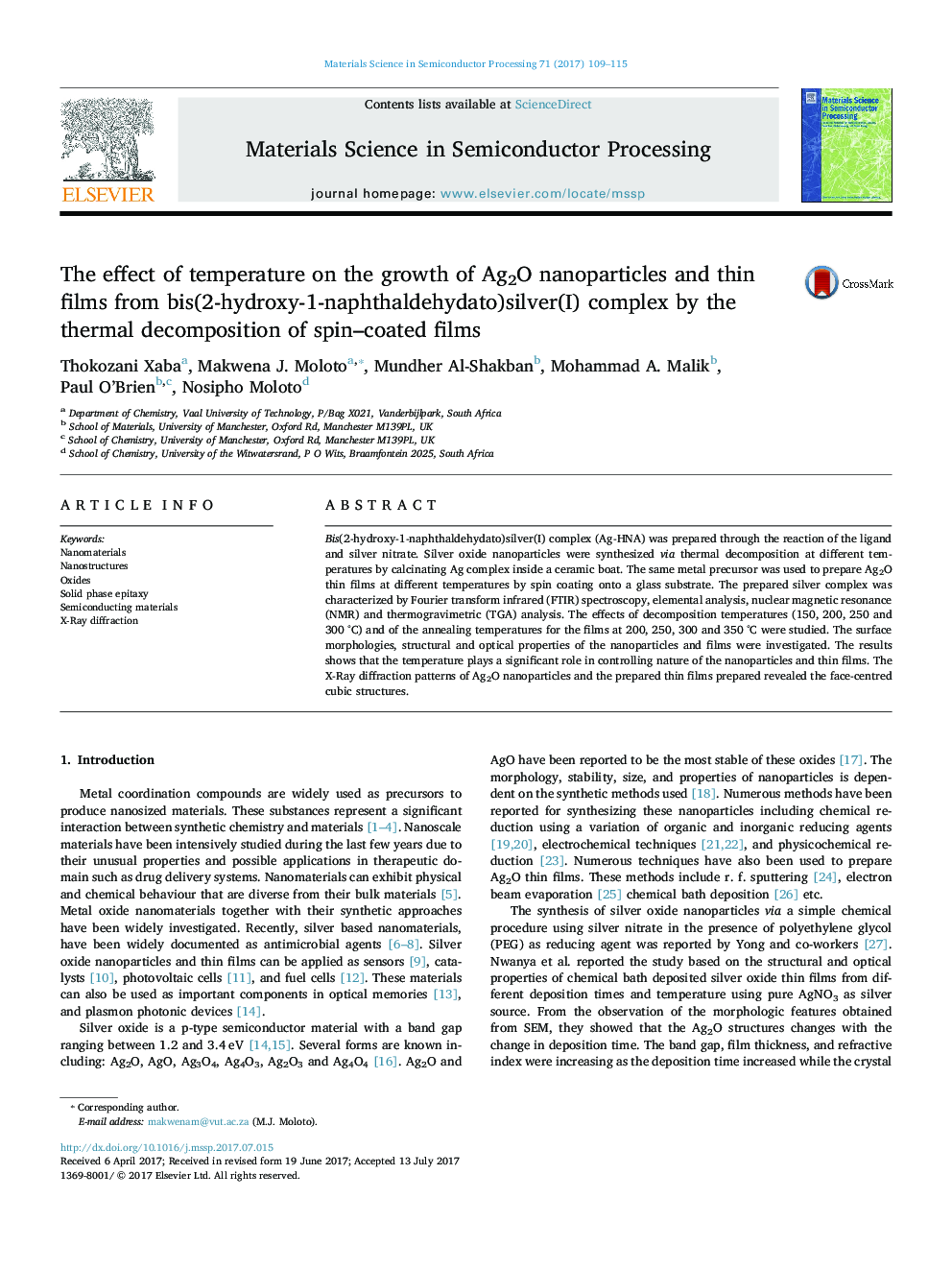| Article ID | Journal | Published Year | Pages | File Type |
|---|---|---|---|---|
| 5005810 | Materials Science in Semiconductor Processing | 2017 | 7 Pages |
Abstract
Bis(2-hydroxy-1-naphthaldehydato)silver(I) complex (Ag-HNA) was prepared through the reaction of the ligand and silver nitrate. Silver oxide nanoparticles were synthesized via thermal decomposition at different temperatures by calcinating Ag complex inside a ceramic boat. The same metal precursor was used to prepare Ag2O thin films at different temperatures by spin coating onto a glass substrate. The prepared silver complex was characterized by Fourier transform infrared (FTIR) spectroscopy, elemental analysis, nuclear magnetic resonance (NMR) and thermogravimetric (TGA) analysis. The effects of decomposition temperatures (150, 200, 250 and 300 °C) and of the annealing temperatures for the films at 200, 250, 300 and 350 °C were studied. The surface morphologies, structural and optical properties of the nanoparticles and films were investigated. The results shows that the temperature plays a significant role in controlling nature of the nanoparticles and thin films. The X-Ray diffraction patterns of Ag2O nanoparticles and the prepared thin films prepared revealed the face-centred cubic structures.
Keywords
Related Topics
Physical Sciences and Engineering
Engineering
Electrical and Electronic Engineering
Authors
Thokozani Xaba, Makwena J. Moloto, Mundher Al-Shakban, Mohammad A. Malik, Paul O'Brien, Nosipho Moloto,
